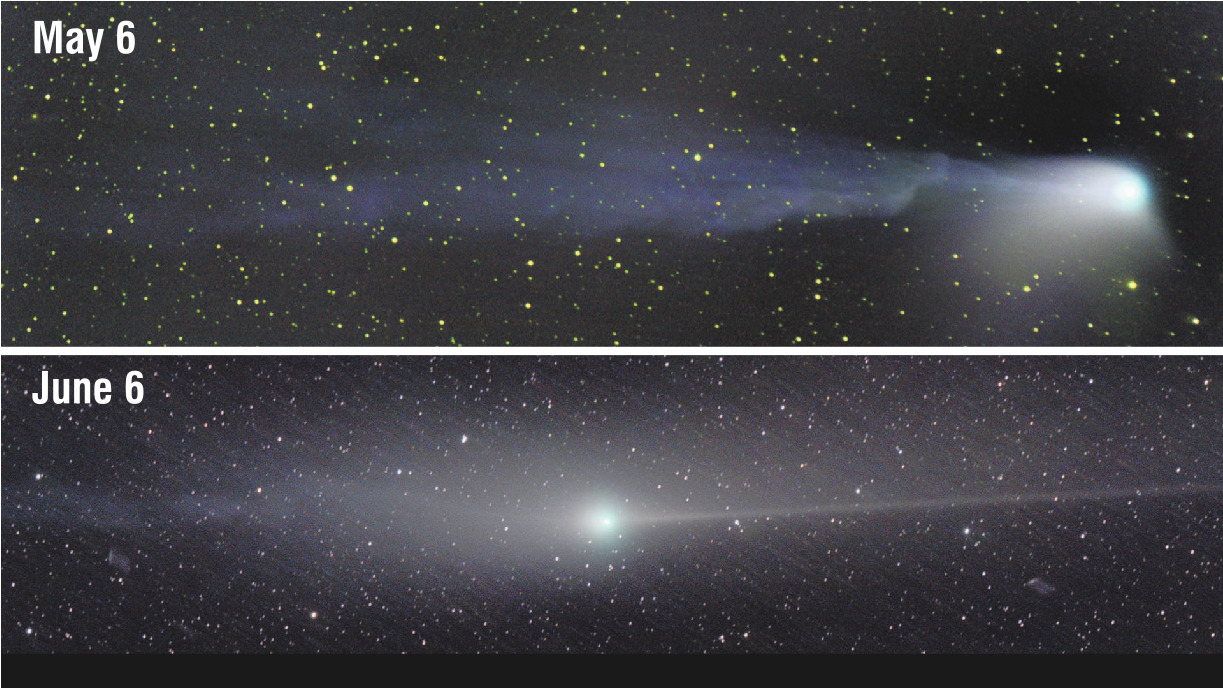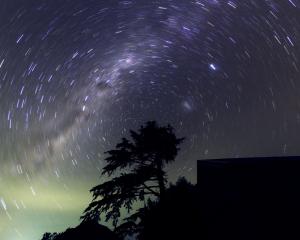During the past six weeks, a stunning comet has been providing a remarkable display in the western sky after sunset. I’ve previously discussed this comet, known as Pons Brooks. It is moving through the constellation Canis Major and is positioned very close to Sirius in the sky. This cosmic snowball, which has a diameter of 30km, takes almost 71 years to complete a single orbit around the sun. The comet reached its perihelion (the point closest to the sun) on April 24 and on June 2, it reached its closest distance to Earth.
While the comet may have faded from naked-eye visibility, it continues to offer a captivating sight through binoculars. From a dark sky site, its photographic view is nothing short of stunning. The comet’s green spherical coma, a hazy cloud of dust and gas enveloping its solid nucleus, is a sight to behold. The ghostly green glow of Pons Brooks’ coma, attributed to the presence of Oxygen, adds to its unique charm.
The comet has two distinct tails — one made of dust and the other of gas. These tails are visible due to different phenomena. The white dust, similar in size to particles found in cigarette smoke, reflects sunlight directly. The gas glows blue due to ionization effects from solar UV radiation. The gas tail always points away from the sun, while the dust tail curves following the comet’s orbital path around the sun. The gas tail waves around in the solar wind and can be disrupted entirely during solar storms.
Because the angle between the sun, Earth, and comet has changed over the past few weeks, our view of the comet and the details we see vary from night to night. On June 6, I managed to take an extraordinary photograph. That night, the Earth passed directly through the comet’s orbital plane, meaning we could view the dust tail "edge on". Thanks to an optical illusion, a whole new tail called an anti-tail became visible as an incredibly bright "spike" pointing towards the sun.













